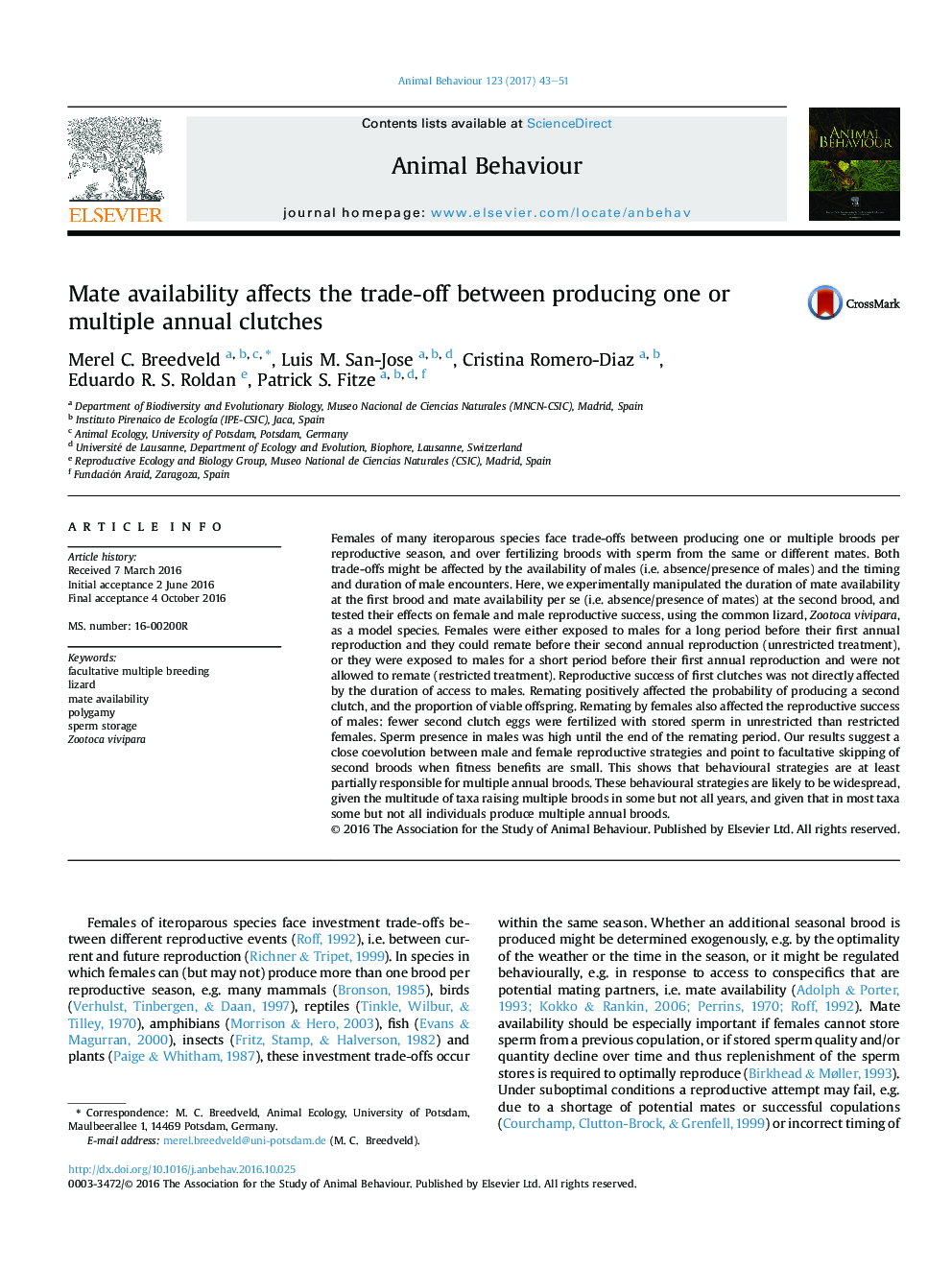| کد مقاله | کد نشریه | سال انتشار | مقاله انگلیسی | نسخه تمام متن |
|---|---|---|---|---|
| 5538568 | 1552205 | 2017 | 9 صفحه PDF | دانلود رایگان |
عنوان انگلیسی مقاله ISI
Mate availability affects the trade-off between producing one or multiple annual clutches
ترجمه فارسی عنوان
در دسترس بودن مادری، منجر به ایجاد اختلاف میان تولید یک یا چند کلاهک سالانه می شود
دانلود مقاله + سفارش ترجمه
دانلود مقاله ISI انگلیسی
رایگان برای ایرانیان
موضوعات مرتبط
علوم زیستی و بیوفناوری
علوم کشاورزی و بیولوژیک
علوم دامی و جانورشناسی
چکیده انگلیسی
Females of many iteroparous species face trade-offs between producing one or multiple broods per reproductive season, and over fertilizing broods with sperm from the same or different mates. Both trade-offs might be affected by the availability of males (i.e. absence/presence of males) and the timing and duration of male encounters. Here, we experimentally manipulated the duration of mate availability at the first brood and mate availability per se (i.e. absence/presence of mates) at the second brood, and tested their effects on female and male reproductive success, using the common lizard, Zootoca vivipara, as a model species. Females were either exposed to males for a long period before their first annual reproduction and they could remate before their second annual reproduction (unrestricted treatment), or they were exposed to males for a short period before their first annual reproduction and were not allowed to remate (restricted treatment). Reproductive success of first clutches was not directly affected by the duration of access to males. Remating positively affected the probability of producing a second clutch, and the proportion of viable offspring. Remating by females also affected the reproductive success of males: fewer second clutch eggs were fertilized with stored sperm in unrestricted than restricted females. Sperm presence in males was high until the end of the remating period. Our results suggest a close coevolution between male and female reproductive strategies and point to facultative skipping of second broods when fitness benefits are small. This shows that behavioural strategies are at least partially responsible for multiple annual broods. These behavioural strategies are likely to be widespread, given the multitude of taxa raising multiple broods in some but not all years, and given that in most taxa some but not all individuals produce multiple annual broods.
ناشر
Database: Elsevier - ScienceDirect (ساینس دایرکت)
Journal: Animal Behaviour - Volume 123, January 2017, Pages 43-51
Journal: Animal Behaviour - Volume 123, January 2017, Pages 43-51
نویسندگان
Merel C. Breedveld, Luis M. San-Jose, Cristina Romero-Diaz, Eduardo R.S. Roldan, Patrick S. Fitze,
